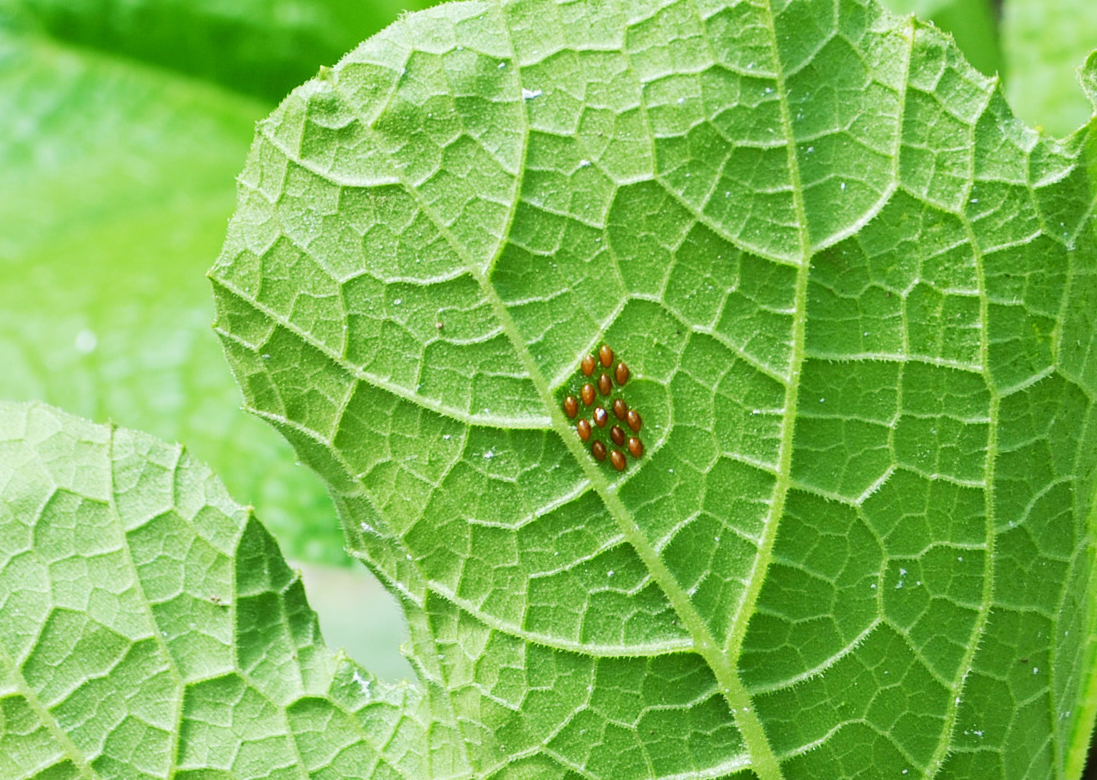By Fritz Mayer
If I leave my squash untended for any length of time, when I come back I’m very likely to find squash nymphs roaming freely over plants and food alike. The nymphs are small spidery-looking things and before long they will turn into adult squash bugs. The adults and the nymph suck juice out of the plants and it there are enough of them, they can kill the plant.
Last year, they killed one of my squash plants, and I resolved to do battle. I got some insecticide soap and every night I went looking for adults and nymphs, and also the eggs, which are laid on the back of squash plant leaves as shown in the picture. When I spotted any bugs, they get a spray of insecticide soap, and then they get pushed down into the soil a good four five inches. They aren’t very fast, and it’s easy to catch them by hand.
When I spot a clutch of eggs – and this takes some looking, but persistence will be rewarded – I pull off the tiny bit of leaf that is hosting the eggs, and squash it between my fingers, and again pushed the mashed remains several inches under the soil. This last part is probably overkill, but I really don’t want to see any squash bugs on my plants.
In fact, I smashed so many eggs last year that I believe I’ve beat down the local population to manageable levels. This year I have seen a total of about eight adult bugs and three clutches of eggs on leaves.
The other insects that can do great damage to cucurbits – squash, cucumbers and melons – are cucumber beetles. These are much smaller than squash bugs and it’s not possible, usually, to catch them by hand. But one can usually sneak up close enough to them to spray insecticidal soap on them, which will kill them. I’ve also caught a few with a shot of spray in mid-air.
Again, persistence is key. I killed so many last year that the local population is way down and I’ve only seen about a dozen this year. This method would probably not work well on a large operation with many plants, but with only about a dozen cucurbits to safeguard, it works well enough to insure that the plants will produce fruit.

